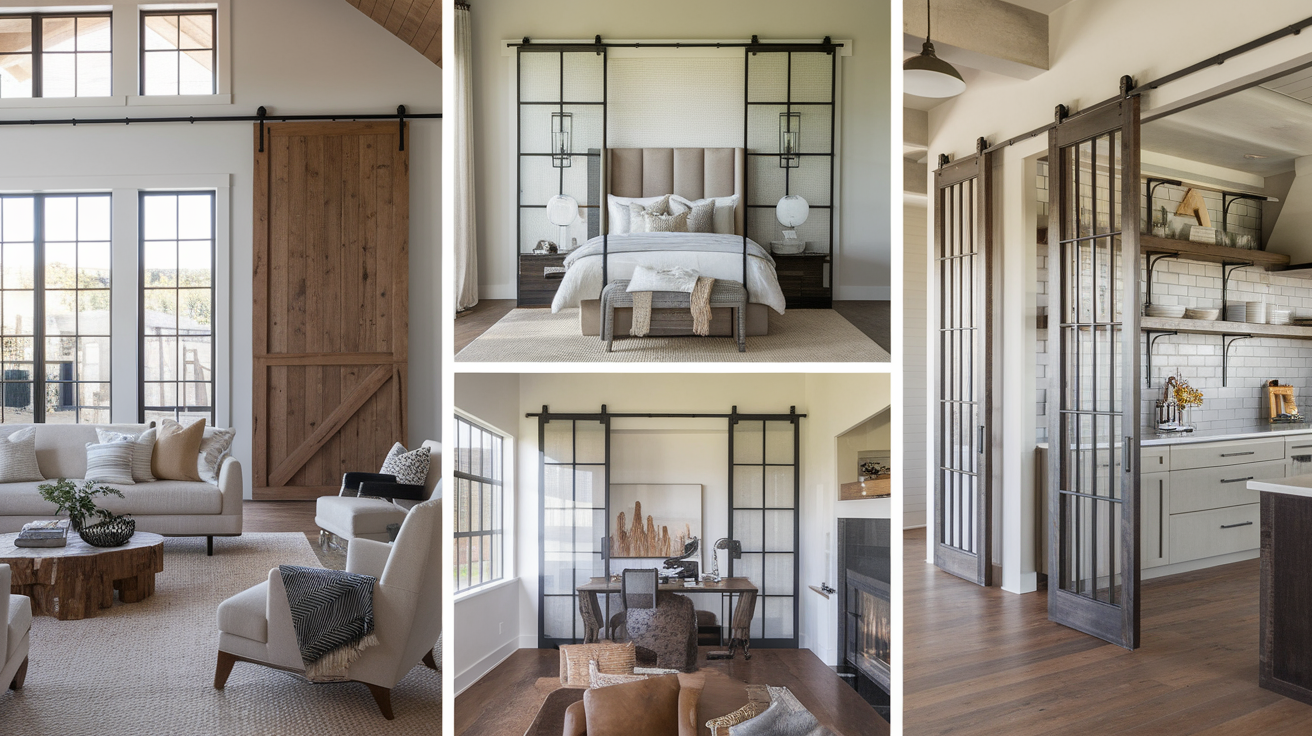When it comes to selecting interior doors for your home, the options can be overwhelming. From enhancing privacy to adding style, your door choice plays an important role in your home’s overall design.
Each type of door offers unique advantages, such as improving privacy, saving space, or enhancing the aesthetic of a room.
No matter the style or function you’re looking for, the right interior door can transform your space and elevate your home’s design.
With various materials, styles, and finishes to choose from, I’ll guide you through the types of interior doors, what to consider for each, and how to make the right selection for your space.
In this blog, I’ll help you understand the benefits of different door types, so you can make an informed decision that suits your needs.
What Are Interior Doors?
Interior doors are essential elements that separate rooms or spaces within a home, providing privacy, sound control, and aesthetic appeal.
Unlike exterior doors, they aren’t designed for weather protection or security.
Interior doors come in a variety of styles, such as hinged, sliding, bi-fold, and pocket doors, and are made from materials like wood, fiberglass, metal, or glass.
The material and design you choose depend on the room’s specific needs – whether it’s privacy, space efficiency, or natural light.
Selecting the right interior door enhances both the functionality and visual appeal of your home’s interior.
Types of Interior Doors
Choosing the right interior door comes down to understanding each option’s function and style. Below are some types of interior doors, each with its unique benefits and features.
1. Panel Doors
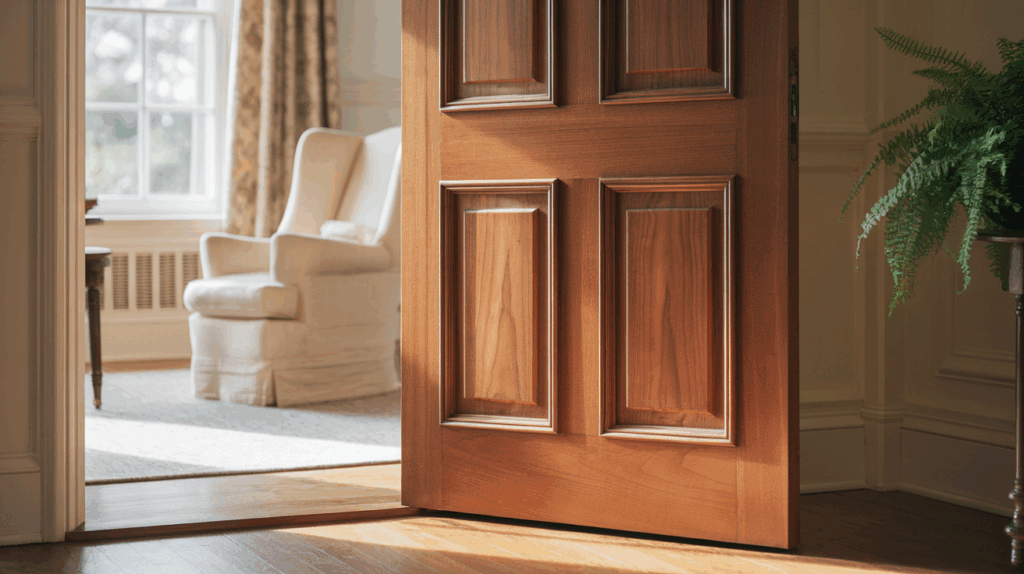
Panel doors are a timeless choice for many homes, featuring solid construction with raised or recessed panels.
These doors add a classic, versatile design that can complement various home styles. If you opt for wood or composite material, panel doors offer good privacy and sound insulation.
They are especially suitable for living rooms, bedrooms, and dining rooms, providing both aesthetic appeal and functional benefits.
With customization options for panel designs, these doors are easily adaptable to different tastes.
2. Flush Doors
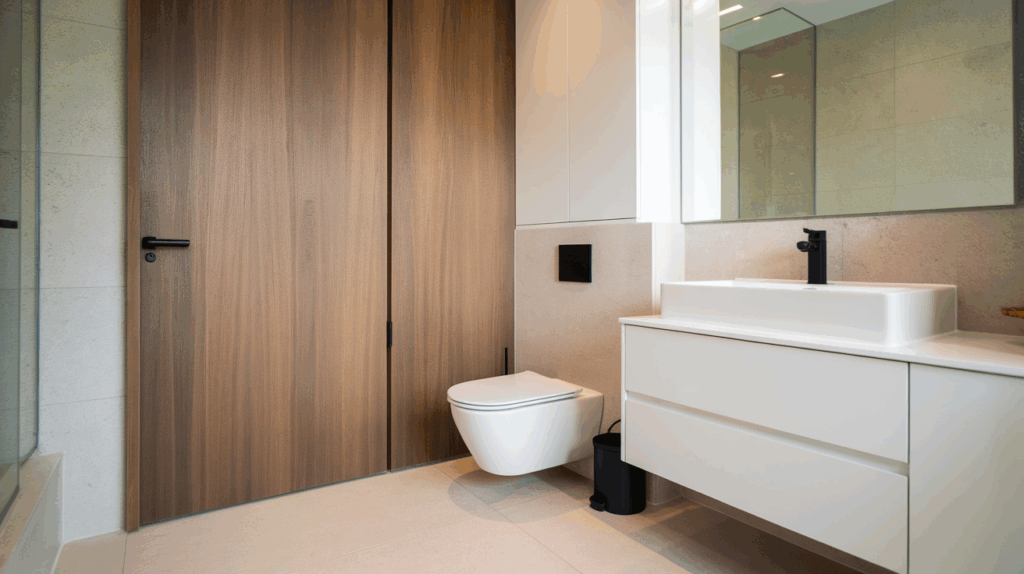
Flush doors have a smooth, flat surface without any raised panels or details.
Their minimalistic design makes them a popular choice for modern homes, offering a clean, streamlined look. Typically made from plywood or MDF, flush doors are simple yet durable.
They provide privacy and are often chosen for areas that don’t need to make a design statement, such as bathrooms, closets, or utility rooms.
Since they don’t have intricate details, flush doors are easy to clean and maintain.
3. French Doors
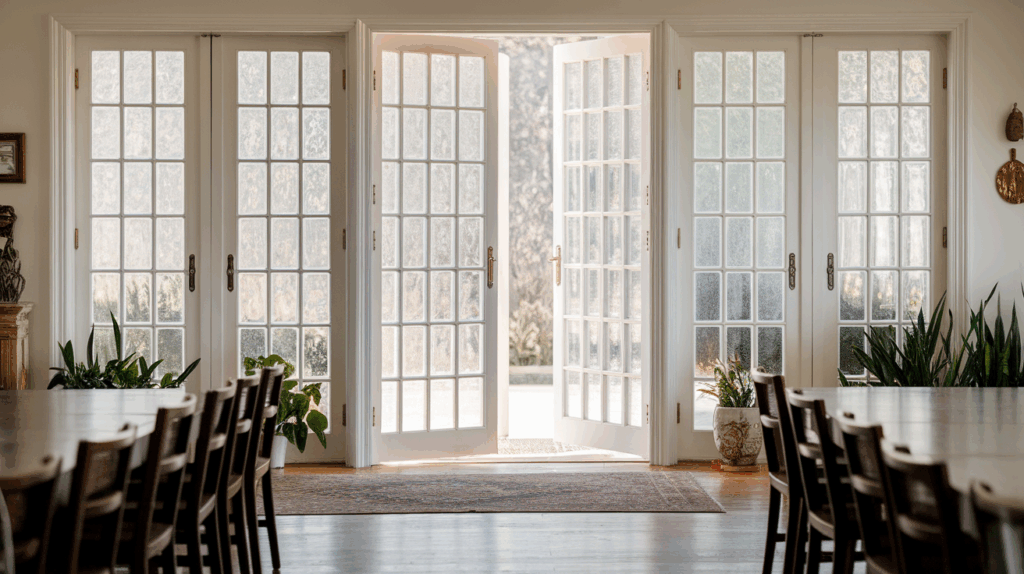
French doors are elegant and functional, consisting of two doors with glass panels that swing open.
These doors allow natural light to flow between rooms while still providing separation.
They are perfect for spaces like dining rooms, offices, or connecting to patios or balconies. French doors create a sense of openness and grandeur.
Depending on your preference, the glass can be clear, frosted, or textured for privacy. French doors are a beautiful way to brighten up any space while maintaining privacy.
4. Barn Doors
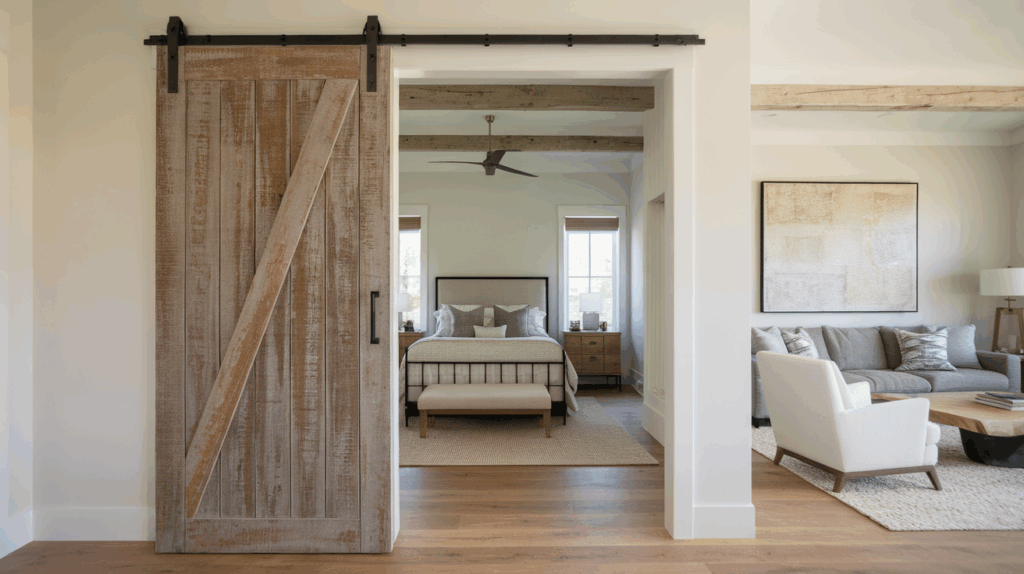
Barn doors offer a rustic, space-saving solution, typically mounted on a track system that allows them to slide open and closed.
Ideal for homes with modern, industrial, or farmhouse designs, barn doors are an excellent option for smaller spaces where traditional swinging doors might not fit.
They add a unique focal point to any room while saving valuable floor space.
While they’re often used in bedrooms or closets, barn doors can also be used as room dividers or even for laundry rooms.
5. Pocket Doors
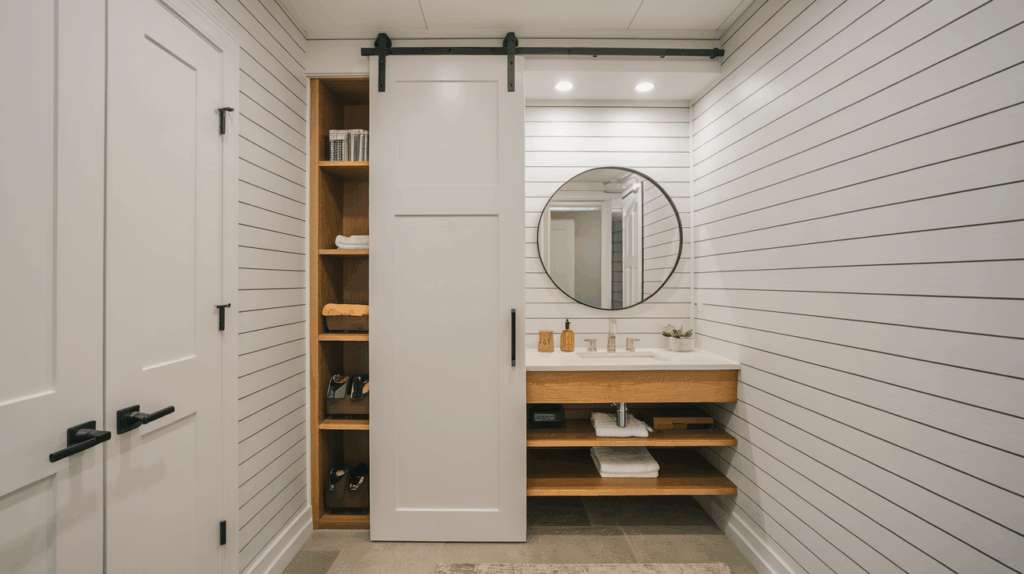
Pocket doors are a sliding door option that disappears into the wall when open. This feature makes them a perfect space-saver in smaller rooms, such as bathrooms, pantries, or closets.
Pocket doors are incredibly useful where you need to save space, as they don’t swing open and take up valuable floor area.
Available in a variety of materials, including wood and glass, pocket doors are sleek and functional, providing the ability to keep spaces separate while maintaining openness when needed.
6. Sliding Doors
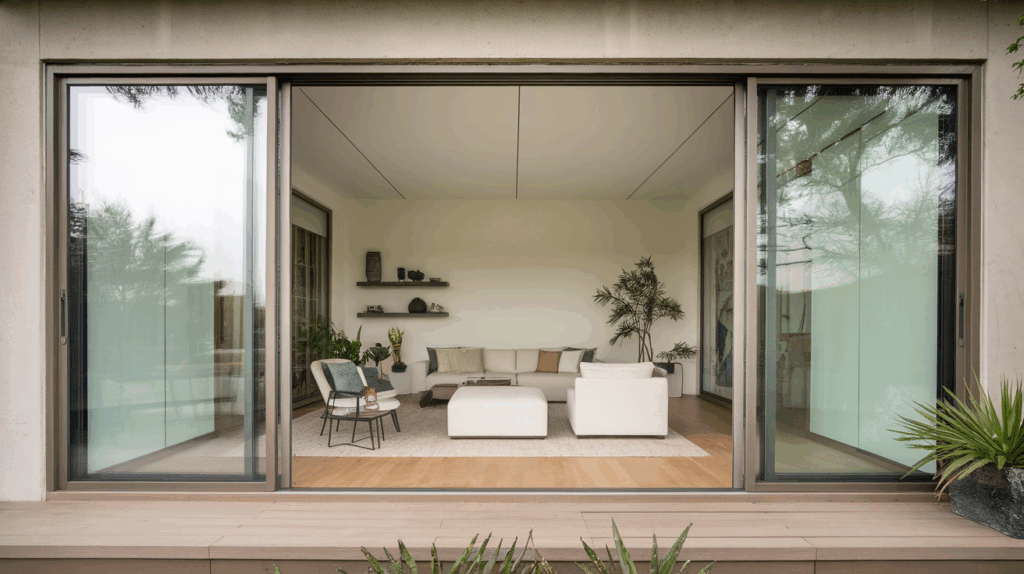
Sliding doors are perfect for larger openings, providing easy access and maximizing natural light.
Often used for connecting living spaces to outdoor patios or decks, they are made of glass and can open horizontally.
Sliding doors offer a modern, stylish look while being energy-efficient, especially when double-glazed glass is used.
These doors are easy to operate and work well in homes that prioritize smooth transitions between indoor and outdoor spaces, offering both style and functionality.
7. Louvered Doors

Louvered doors are distinguished by their horizontal slats, which allow air circulation while providing privacy.
These doors are often used in areas like laundry rooms, closets, or utility rooms where ventilation is important.
Louvered doors allow airflow while maintaining separation between rooms.
Made from wood or composite materials, these doors are great for spaces that require good air circulation, such as utility rooms, but still need to keep other elements, like light, out of private areas.
8. Bi-fold Doors
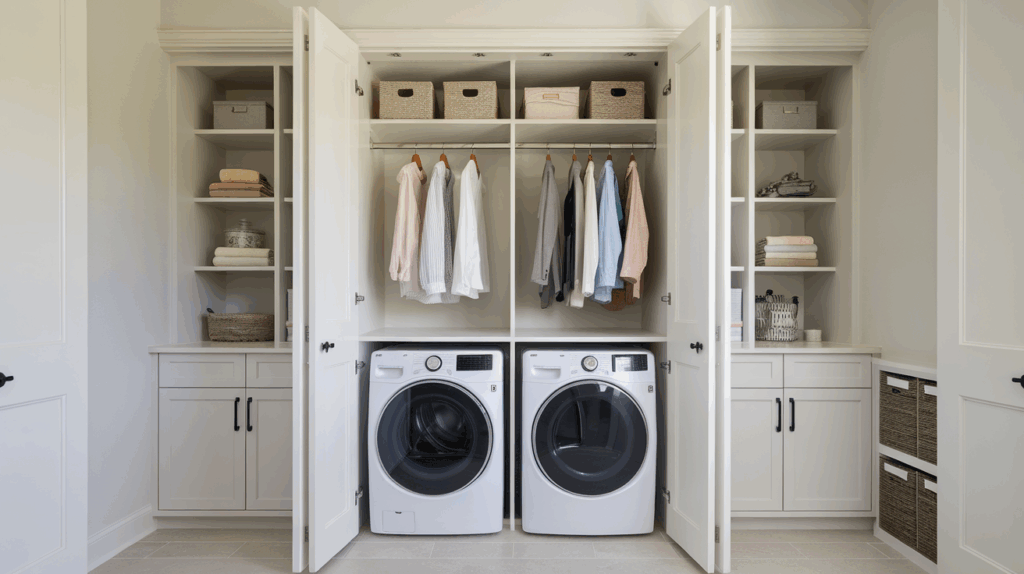
Bi-fold doors are made of multiple panels that fold to open. This makes them a perfect choice for smaller spaces.
These doors are often used in closets, laundry rooms, or as room dividers. They are especially great for maximizing space, as they don’t swing open.
Bi-fold doors are available in a variety of materials, such as wood, glass, or mirrored finishes, and can fit many different interior styles.
These doors offer a practical solution while maintaining functionality and style.
9. Hinged Doors
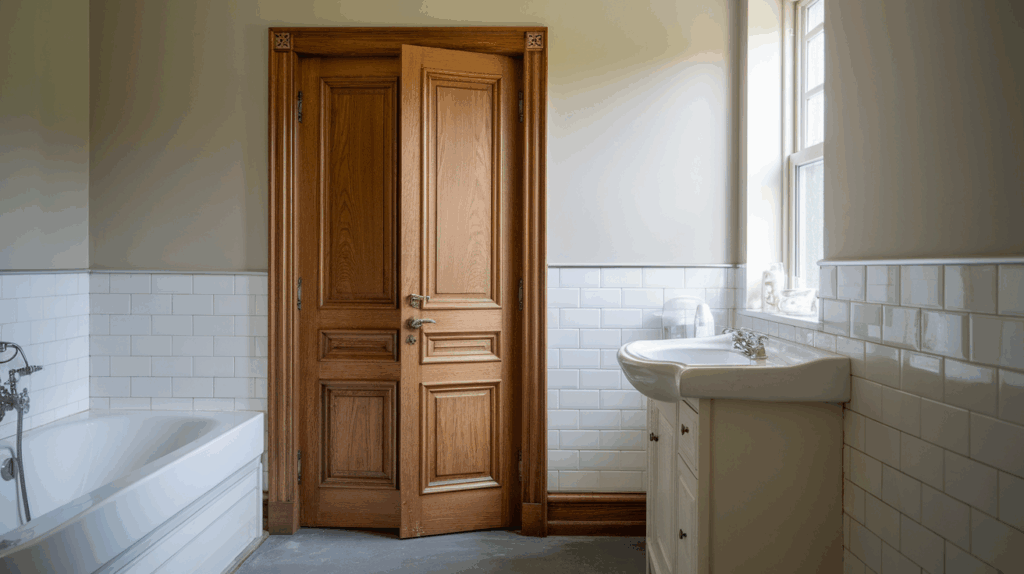
Hinged doors are the most traditional type of door, attached to the frame by hinges. They swing open and are often used in bedrooms, bathrooms, or living rooms.
Hinged doors are highly customizable and come in a variety of materials, including solid wood, composite, or glass.
They are easy to install, maintain, and offer good privacy. Hinged doors are versatile and can fit any home style, whether traditional, modern, or transitional.
10. Glass Doors
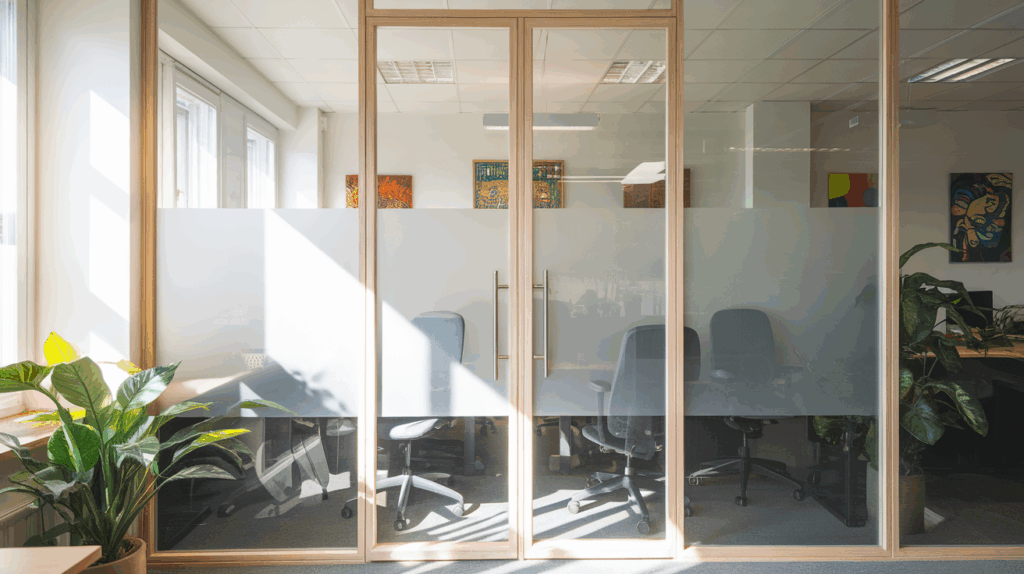
Glass interior doors are an excellent option if you want to let in light while still offering some separation between rooms. They can be frosted, clear, or textured for added privacy.
Glass doors are commonly used in offices, dining rooms, or any area where you want to maintain an open feel while still creating boundaries.
Glass doors can be framed with wood or metal for added durability and style, and they’re perfect for those looking to combine transparency and separation.
11. Wood Doors
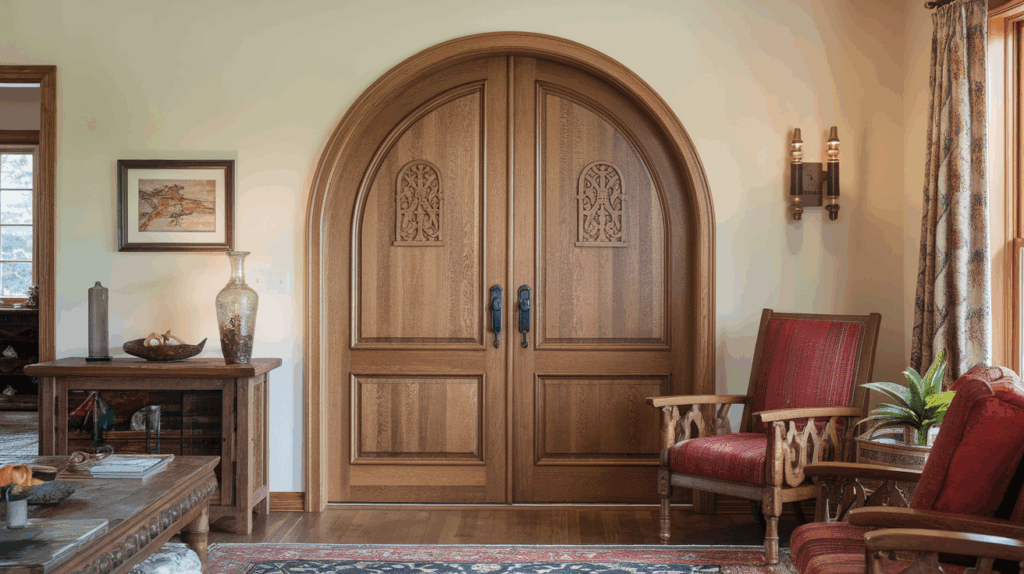
Wood doors are a classic option that adds warmth and texture to your home. They come in a variety of finishes, from stained wood to painted options, making them highly versatile.
Wood doors are great for bedrooms, offices, and living rooms, offering both functionality and style.
They are solid, durable, and can be customized with panels, carvings, or glass inserts. Depending on the type of wood, they also provide soundproofing and insulation, helping to create a comfortable and private space.
12. Steel Doors
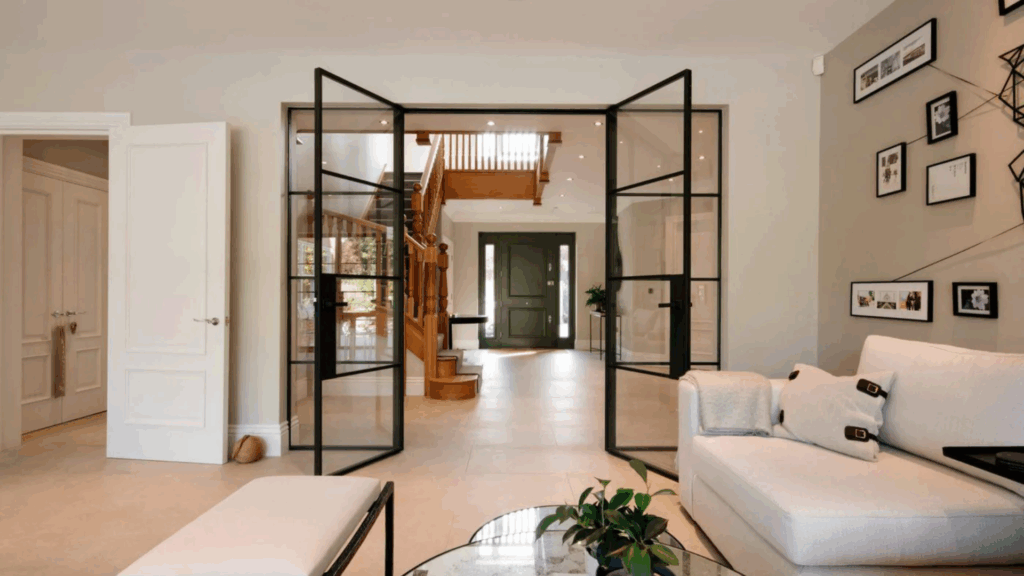
Steel doors are durable and secure, often used in high-traffic areas or where added security is needed.
These doors are typically solid, making them an excellent choice for exterior or interior applications where protection is a priority.
Steel doors are highly resistant to wear and weathering, providing long-lasting performance.
They are also low-maintenance and come in a range of designs, offering strength and reliability for homeowners seeking durability and security.
13. Fiberglass Doors
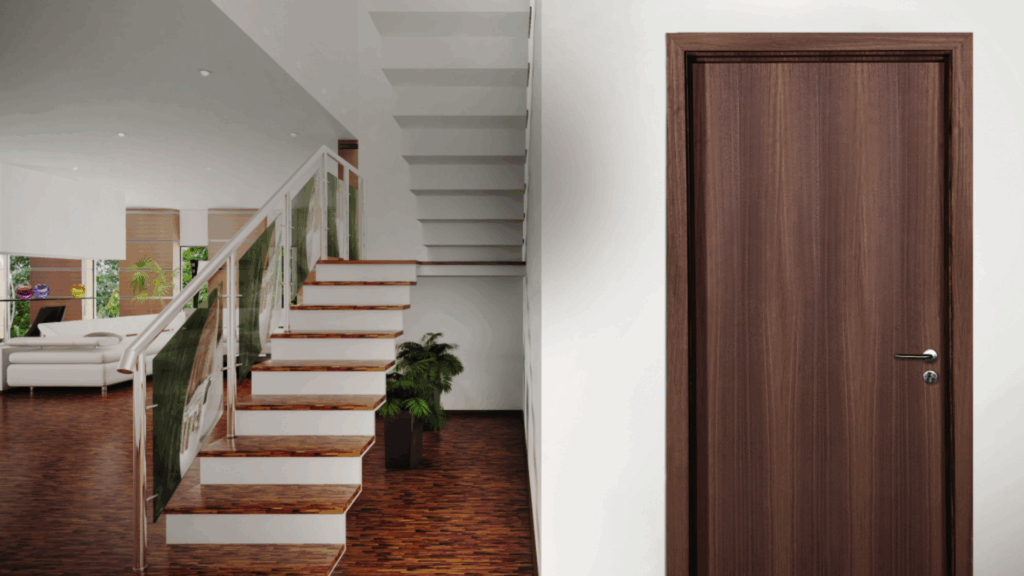
Fiberglass doors offer a similar look to wood doors but are more resistant to moisture and require less maintenance.
They are highly durable, and some models are designed to mimic the appearance of wood with a wood-like finish.
Fiberglass doors are ideal for areas prone to high humidity or extreme temperatures, like bathrooms or basements.
They are energy-efficient and provide good insulation, making them suitable for both interior and exterior applications.
14. Acoustic Doors
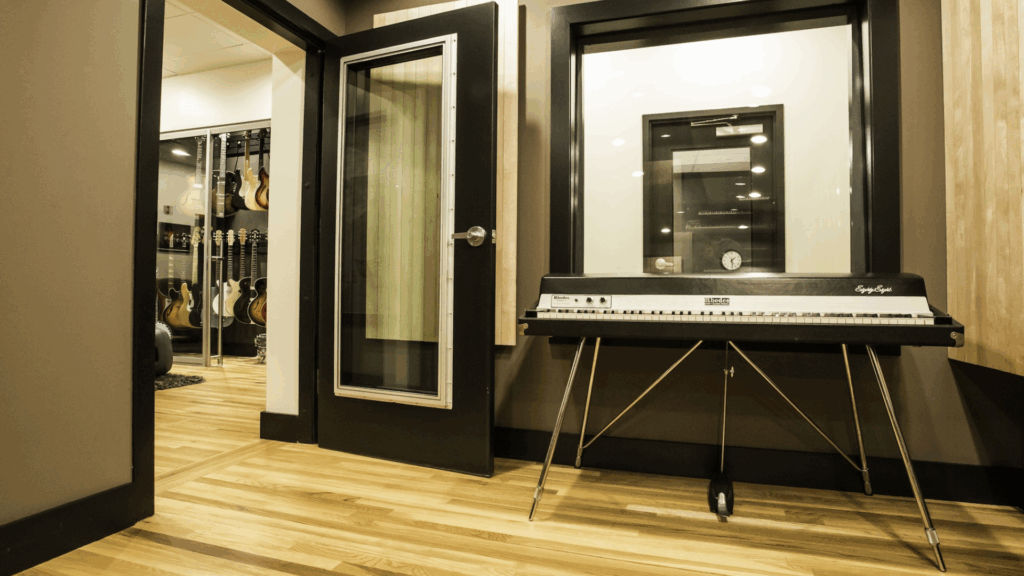
Acoustic doors are designed to reduce sound transmission between rooms. These doors are often used in offices, studios, or bedrooms where noise reduction is a priority.
Acoustic doors are typically solid and can be made from wood, fiberglass, or metal, depending on the specific soundproofing needs.
They are thicker than standard doors and may include soundproofing materials within the core.
Acoustic doors provide excellent privacy and quietness, making them perfect for spaces where peace and focus are needed.
Factors to Consider When Choosing Interior Doors
Before selecting the type of interior door, it’s essential to consider a few factors. Think about the style of your home, the level of privacy needed for each room, and the door’s durability.
- Style: The door should complement your home’s architectural style. Whether traditional or modern, the door type must align with your interior design.
- Functionality: Think about how the door will be used. Does it need to provide privacy, allow light, or save space?
- Material: Doors are made from various materials, each with different properties. Consider durability, maintenance, and appearance.
- Space: If you’re dealing with small spaces, consider options like sliding or bi-fold doors that save floor space.
Comparison of Different Types of Doors
Here’s a comparison of the different door types to help you determine which one fits your needs:
| Door Type | Best For | Pros | Cons |
|---|---|---|---|
| Panel Doors | Living rooms, bedrooms | Classic design, good privacy, customizable | It can be expensive, depending on the wood type |
| Flush Doors | Modern homes, bathrooms, and closets | Sleek, low-maintenance, affordable | Lacks intricate design, minimal style |
| French Doors | Dining rooms, offices, and patios | Elegant, allows natural light, and has an airy feel | Can lack privacy with clear glass |
| Barn Doors | Small spaces, rustic or modern homes | Space-saving, unique design | Needs wall space for the track |
| Pocket Doors | Small rooms, bathrooms, and closets | Saves space, minimal clutter | Expensive, needs wall space for pocket mechanism |
| Sliding Doors | Patios, balconies, and modern designs | Large openings, modern, lots of light | Less privacy, not ideal for small spaces |
| Bi-fold Doors | Closets, laundry rooms | Space-saving, functional | Maintenance can be tricky |
| Hinged Doors | Bedrooms, bathrooms, and living rooms | Easy to install, versatile, and good privacy | Requires space to swing open, not ideal for narrow spaces |
| Glass Doors | Offices, dining rooms, hallways | Adds natural light, open feel | Less privacy can be fragile if not tempered |
| Wood Doors | Bedrooms, offices, and living rooms | Durable, customizable, and with great aesthetic appeal | Needs maintenance, may warp or rot in humid areas |
| Steel Doors | High-traffic areas, offices, basements | Strong, secure, low-maintenance | Less aesthetically flexible, can rust in certain conditions |
| Fiberglass Doors | Bathrooms, basements, and high-humidity areas | Durable, moisture-resistant, energy-efficient | May lack the natural look of wood, and can be expensive |
| Acoustic Doors | Studios, offices, bedrooms, home theaters | Soundproofing provides privacy and quietness | Bulky, more expensive than regular doors |
| Louvered Doors | Utility rooms, closets, and bathrooms | Provides ventilation, great for closets and laundry rooms | Not ideal for privacy, can be noisy |
| Composite Doors | Modern homes, high-traffic areas | Durable, low-maintenance, resistant to moisture and warping | More expensive than vinyl, may lack natural wood appeal |
This table covers the key door types, best uses, pros, and cons, giving you a detailed overview to help with decision-making.
Conclusion
Choosing the right interior door for your home involves considering the design, functionality, and material that best suit your space.
With so many types available, from classic wood panel doors to modern sliding barn doors, there is an option for every style and need.
Consider the door’s purpose in your home, if for privacy, light, soundproofing, or space-saving, and select the one that will meet both your aesthetic preferences and practical needs.
By understanding the differences between these doors, you can make a more informed decision to enhance the comfort and appearance of your living space.
Remember, the right door can transform a room, making it more functional and stylish.
Take your time to choose wisely, as the right interior door will last for years and contribute significantly to your home’s overall design and atmosphere.

